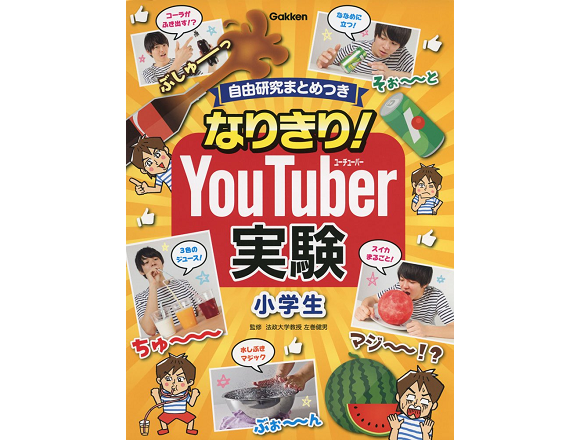
Educational book’s value is getting buried under all the grumbling about kids these days.
Since classes start in April in Japan, summer vacation comes right in the middle of the school year. As part of an unfailingly studious and industrious society, it’s no surprise that Japanese kids are expected to continue doing academic activities during the vacation period, and in addition to assigned homework elementary school kids are expected to do some sort of independent study project in the science or humanity fields.
Kids aren’t entirely on their own, though, as publishers offer an array of educational books designed to help guide young minds through tried and true self-study projects. But while this has all been part of Japanese education for generations, Twitter user @akasofa recently spotted a new, and some might say startling, twist: a self-study guide for elementary school kids that helps them reenact popular YouTube videos.
“This is like opening the gates to hell,” groaned @akasofa, and several commenters shared his grim outlook on the influence this book might have on young kids.
“When I think about all the elementary and junior high kids who’re going to become YouTubers, it makes me want to puke.”
“They’re not gonna be YouTubers. They’re just gonna be unemployed.”
“This country is done for.”
“Ugh, they’re seriously selling this? It’s the end of the world.”
“Welcome to hell.”
But in the rush to condemn the book (which is being sold here on Amazon Japan for 1,058 yen [US$9.50]) and its readers, some important things are getting overlooked. Most importantly, the book isn’t a guide in how to make viral videos. Instead, it examines a selection of already-popular and common YouTube videos, such as increasing the amount of carbonation in a soda bottle, doing magic tricks involving water splashing in a bowl, or balancing a canned beverage tipped at an angle.
While those all might make for funny, entertaining YouTube videos, they’re also science experiments involving chemistry, physics, and fluid mechanics. The book also contains explanations of the scientific principles behind each, so it’s not like the author, Hosei University education professor Takeo Samaki, is presenting the topics as “Just do this so you can become famous on YouTube!” Sure, in YouTube videos the experiments are presented with a sillier, more entertaining tone than they would be in a strictly educational TV programs and films, but the science behind them is the same.
One of the biggest hurdles educators have to clear in getting kids to develop a passion for a particular subject is convincing them that it’s not boring. With that in mind, trying to lead kids down a path from “This YouTube video is funny!” to “What science stuff do I need to know to try it for myself?” and finally “What other cool science stuff is there?” doesn’t seem like such a terrible idea, especially since kids growing up in the Internet age are going to be watching funny videos online regardless of whether or not educators try to build on that initial interest.
Source: Jin
Top image: Amazon Japan